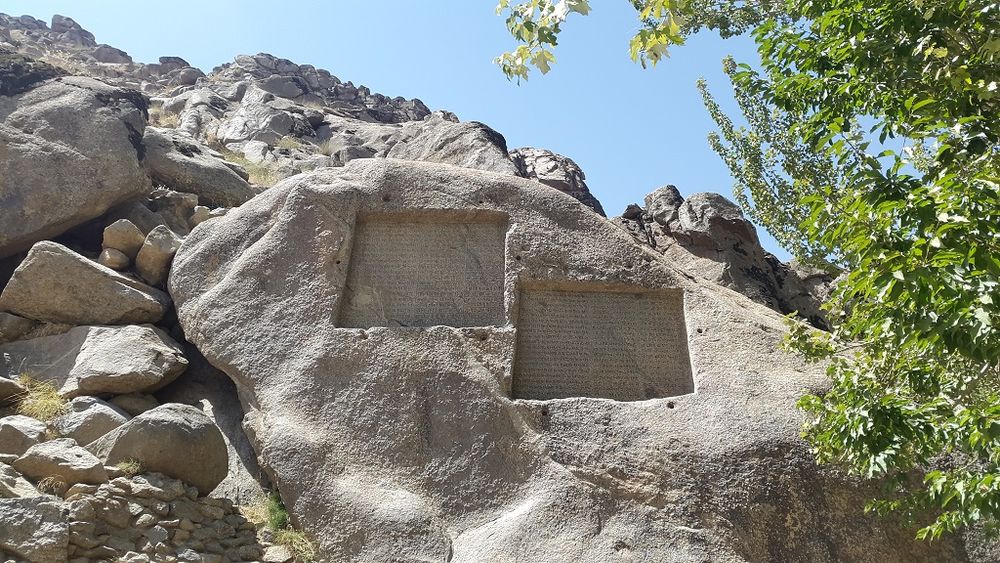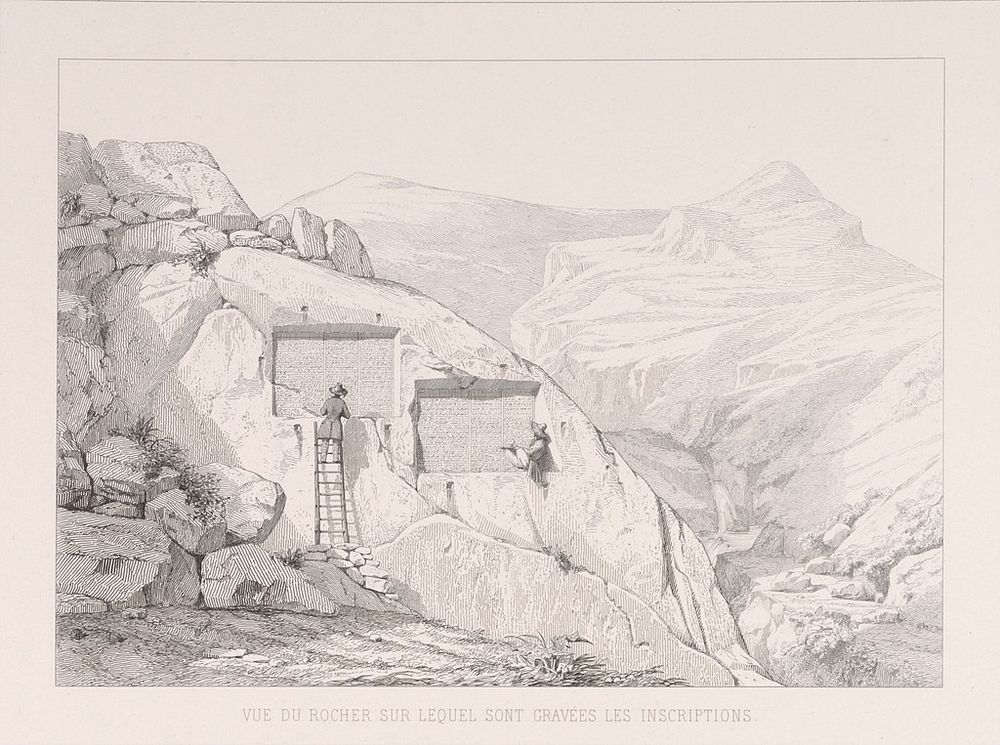Ganj Nameh: A Window into Achaemenid History through Trilingual Inscriptions
The Ganj Nameh Inscriptions. Photo: Salman arab ameri/Wikimedia
Nestled in the rugged mountains of Iran lies an ancient marvel that bears witness to the rich history of the Persian Empire. The Ganj Nameh inscriptions, attributed to the Achaemenid kings Darius the Great and his son Xerxes, are a testament to the grandeur and linguistic diversity of the empire. Carved into the rocky cliffs near Hamadan, these trilingual inscriptions offer valuable insights into the cultural, historical, and linguistic heritage of ancient Persia.

Drawing by Eugène Flandin showing the inscriptions in 1839. Photo: Wikimedia
The Achaemenid Dynasty
The Achaemenid Empire, founded by Cyrus the Great in the 6th century BCE, was one of the most powerful and expansive empires of the ancient world. Its kings, including Darius and Xerxes, sought to assert their authority and leave a lasting legacy. The Ganj Nameh inscriptions serve as a tangible manifestation of their reigns and ambitions.

Photo: Behzad Alipur/Wikimedia
The Trilingual Inscriptions
The Ganj Nameh inscriptions consist of two monumental rock reliefs, positioned side by side, each containing trilingual inscriptions in Old Persian, Elamite, and Babylonian. These languages represent the official administrative languages of the Achaemenid Empire and reflect the diverse linguistic landscape of the time.
Darius the Great, known for his administrative prowess, initiated the inscriptions. His inscription, carved in the Old Persian language, recounts his genealogy, achievements, and the empire's vast territories. It also emphasizes Darius's role as a righteous ruler chosen by the supreme god, Ahura Mazda.
Xerxes, following in his father's footsteps, added his own inscription adjacent to Darius's. Written in the same three languages, Xerxes's inscription mirrors the format of his predecessor but includes additional details about his military campaigns and conquests. These inscriptions served as propaganda tools, conveying the might and authority of the Achaemenid kings to their subjects and rivals.
Cultural Significance
The Ganj Nameh inscriptions provide crucial historical and cultural insights into the Achaemenid Empire. They showcase the empire's multi-ethnic and multilingual nature, highlighting the importance of linguistic diversity and administration in maintaining unity across its vast territories.
Beyond their historical significance, the inscriptions also shed light on the religious and spiritual beliefs of the Achaemenid kings. References to Ahura Mazda, the supreme god of Zoroastrianism, reveal the empire's association with this ancient Iranian religion, which played a significant role in Achaemenid society.
Preservation and Interpretation
Over the centuries, the Ganj Nameh inscriptions have faced weathering and erosion, but efforts have been made to preserve these invaluable historical treasures. The inscriptions have been documented, studied, and translated by scholars to unravel their linguistic and historical complexities.
The trilingual nature of the inscriptions has proven instrumental in deciphering ancient scripts and understanding the interconnections between Old Persian, Elamite, and Babylonian languages. The translations have contributed to our understanding of Achaemenid history, culture, and languages.
The inscription of Darius, on the left, and that of Xerxes, on the right. Photo: Adam Jones/Wikimedia
Visiting Ganj Nameh
Ganj Nameh, with its breathtaking natural surroundings and ancient inscriptions, has become a popular tourist destination. Visitors can marvel at the rock reliefs, observe the intricate carvings, and reflect on the grandeur of the Achaemenid Empire.
The trilingual inscriptions of Darius and Xerxes at Ganj Nameh stand as remarkable remnants of the Achaemenid Empire, showcasing the splendor of its kings and the linguistic diversity of their realm. These inscriptions serve as a testament to the power of language in expressing authority, preserving history, and connecting civilizations.

No comments:
Post a Comment
Note: only a member of this blog may post a comment.